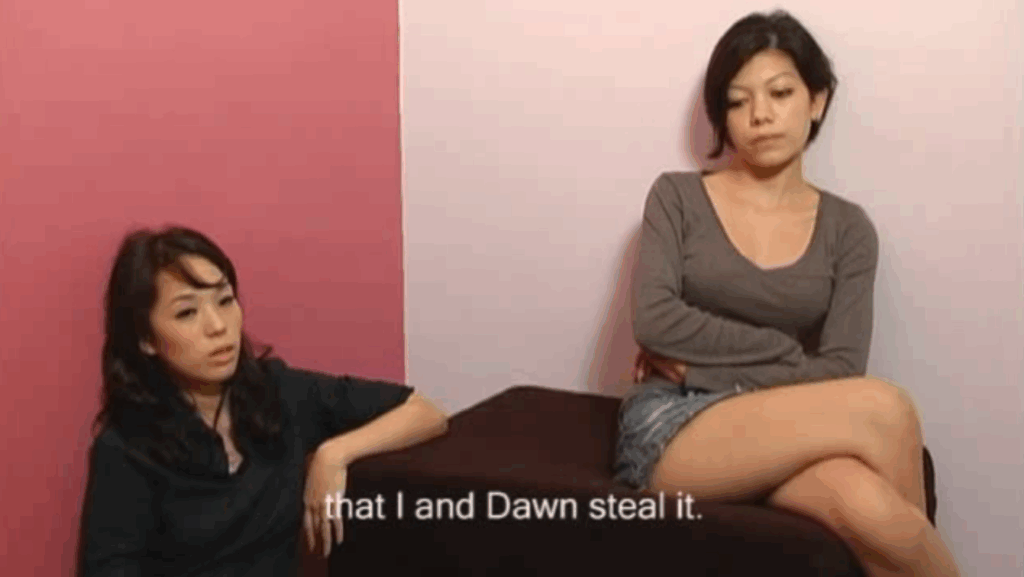Malaysian Dreamgirl
Pioneering Online Reality TV That Captured Local Aspirations

The global explosion of reality television in the early 2000s inevitably spawned localized iterations across the world, each adapting popular formats to suit domestic tastes and cultural nuances. In Malaysia, a significant early entry into this arena, particularly in the burgeoning digital space, was Malaysian Dreamgirl. Premiering in 2008, this online-first reality competition aimed to discover the next top model from a pool of aspiring Malaysian women. While borrowing heavily from international templates like America’s Next Top Model, Malaysian Dreamgirl carved out its own niche, becoming a notable, if sometimes rough-edged, phenomenon in the Malaysian media landscape. But looking back, does it stand as a genuine star-maker and a quality production, or merely a reflection of early digital media growing pains?
Genesis: Birthing a Malaysian Reality Staple Online
Launched in 2008, Malaysian Dreamgirl (often abbreviated as MDG) represented a bold step for Malaysian media content. Its primary innovation was its distribution model: it was conceived and initially broadcast mainly as a web series on the popular portal gua.com.my. This was relatively uncharted territory at the time, leveraging the increasing internet penetration in Malaysia to reach a younger, digitally-savvy audience directly, bypassing traditional broadcast gatekeepers, at least initially.

The concept itself wasn’t revolutionary. The structure clearly mirrored Tyra Banks’s America’s Next Top Model franchise – find a group of young women dreaming of modeling careers, put them through a series of demanding challenges testing their photogenic qualities, runway walk, commercial appeal, and resilience, and eliminate them one by one until a winner emerges. The localization, however, was key. This wasn’t just another Top Model; it was Malaysian Dreamgirl, promising a platform specifically for local talent, reflecting Malaysian standards of beauty (or perhaps challenging them), and navigating the specific cultural context of the nation.
The show ran for two main seasons (2008 and 2009). Its initial online success, generating significant buzz and viewer engagement through webisodes and online voting, led to parts of the show, particularly the finales, being broadcast on national television networks like ntv7 (Season 1) and TV3 (Season 2). This hybrid approach demonstrated both the power of the online platform to build an audience and the continuing relevance of traditional television for mainstream visibility and prestige. It marked Malaysian Dreamgirl as a transitional format, bridging the gap between old and new media in the local entertainment industry.
The Format: More Than Just Pretty Faces?
At its core, Malaysian Dreamgirl followed the tried-and-tested reality competition formula. Each season featured a cast of hopefuls living together, navigating group dynamics alongside the pressures of the competition. Weekly episodes centered around specific challenges designed to mimic the demands of the modeling industry. These typically included:
- Photo Shoots: Often thematic and sometimes elaborate (within budget constraints), testing versatility in front of the camera.
- Runway Challenges: Assessing poise, walk, and ability to showcase clothing.
- Commercial/Acting Challenges: Evaluating on-screen presence and ability to sell a product or persona.
- Makeovers: The obligatory reality TV segment designed to create drama and transformation.
Each week culminated in a judging session where contestants faced a panel comprising industry figures – photographers, designers, media personalities, and the show’s host. Performance in the challenges, overall potential, and attitude were scrutinized, leading to the elimination of at least one contestant.

A significant aspect, particularly given its online origins, was the element of audience interaction. While the judges ultimately made the elimination decisions, online voting often played a role, perhaps influencing saves or highlighting fan favorites, adding a layer of democratic engagement typical of web-based content aiming for virality.
Compared to its glossy international counterparts like ANTM, MDG‘s format felt familiar yet distinctly local. The challenges sometimes incorporated Malaysian cultural elements or locations, and the discussions arguably reflected local industry standards and perspectives. However, it also inherited some of reality TV’s less savory aspects – manufactured drama, selective editing to create heroes and villains, and the inherent pressure-cooker environment designed to provoke conflict and emotional responses. The question always lingers with such formats: is it truly about finding talent, or generating entertaining television through orchestrated tension? Malaysian Dreamgirl likely aimed for both, with varying degrees of success.
The Cast: Contestants, Hosts, and Judges – Personalities in the Spotlight
The success of any reality show hinges significantly on its cast. Malaysian Dreamgirl aimed to showcase a diverse representation of Malaysian women, reflecting the nation’s multi-ethnic makeup.
- The Contestants: Across its seasons, the show featured young women from various backgrounds, each bringing their unique look, personality, and backstory. Notable winners included Cindy Tey (Season 1) and Juanita Ramayah (Season 2), who embodied the “dreamgirl” archetype the show sought. As with most reality TV, viewers witnessed the emergence of familiar character tropes – the early frontrunner, the underdog, the controversial figure, the quiet achiever. The editing inevitably shaped these narratives, but the show did provide a platform for these women to gain national visibility. The extent to which it genuinely launched sustainable modeling careers for most participants, beyond the winners, is harder to ascertain, a common critique of such competitions globally.
- The Hosts: The show saw a change in hosts between seasons. Season 1 was hosted by the actress and television personality Sazzy Falak, while Season 2 was helmed by model and actress Elaine Daly. Both brought glamour and a degree of industry insight to the role. Sazzy Falak provided an energetic and engaging presence for the inaugural season. Elaine Daly, with her own successful modeling background, offered perhaps a more direct mentorship style in the second season. An effective host in this format needs to be part presenter, part mentor, part confidante, and part stern judge – a difficult balancing act that both Falak and Daly navigated with reasonable competence, becoming key faces associated with the show’s brand.
- The Judges: The judging panel typically included a mix of Malaysian fashion industry insiders, photographers, media figures (like blogger Kenny Sia, who served as a judge/guest), and sometimes international guests. The quality of judging in reality TV can range from genuinely constructive criticism to overly harsh pronouncements designed for dramatic effect. Malaysian Dreamgirl‘s panel generally aimed for the former, providing feedback ostensibly relevant to the Malaysian modeling scene. The credibility of the panel was crucial for lending legitimacy to the competition’s claim of finding genuine talent.
Production and Presentation: Indie Grit vs. Global Gloss
As a primarily online production, especially in its first season, Malaysian Dreamgirl operated with noticeable budget constraints compared to lavish international reality shows. This “indie reality show” feel was part of its identity.
The production values were functional rather than spectacular. Camera work captured the necessary action but rarely felt cinematic. Editing focused on constructing narratives and highlighting dramatic moments, sometimes feeling choppy or abrupt. The overall aesthetic was less polished, reflecting the digital media standards of the late 2000s and the realities of local production budgets.
While some might view this as a drawback, it also lent the show a certain raw authenticity. It felt less manufactured, perhaps more relatable to its local audience than the hyper-stylized versions from overseas. The transition to incorporating TV broadcasts likely saw some increase in production quality in the second season, but it largely retained its grounded, less glossy feel. This technical aspect is a double-edged sword: it reinforces the show’s local identity but might underwhelm viewers accustomed to higher international standards.

Reception and Impact: A Digital Trailblazer in Malaysian Media
Malaysian Dreamgirl arrived at a pivotal moment for Malaysian media, demonstrating the viability of online platforms for original content creation and audience building.
- Popularity and Engagement: During its run, the show generated considerable online buzz. Webisodes received significant views, and comment sections and forums buzzed with discussions about the contestants and challenges. The online voting component fostered a sense of audience participation. Its successful transition to television for its finales further cemented its popularity and brought it to a wider mainstream audience. It became a recognized brand within Malaysian pop culture for a time.
- Critical and Audience Reception: Formal critical reviews from major international outlets are non-existent, as expected for a local Malaysian production. Its IMDb page lacks ratings, and it wouldn’t meet the criteria for Rotten Tomatoes scores. However, contemporary Malaysian entertainment news sites, blogs (like that of judge Kenny Sia), and forums offered commentary. Generally, the reception was positive, particularly praising the platform it offered local talent and its pioneering use of the web. Criticisms often centered on comparisons to ANTM (finding it less polished), the sometimes predictable reality TV drama, or debates about the specific challenges or judging decisions. Audience reception, judged by online engagement and its successful run, was largely favorable within its target demographic.
- Cultural Impact and Legacy: As highlighted in academic analyses like the UKM Journal article on Malaysian reality TV, Malaysian Dreamgirl is considered a significant early example of localized reality programming and digital content strategy in Malaysia. It tapped into aspirations fueled by global media (“the dream” of becoming a model) but grounded them in a local context. It provided valuable visibility for its hosts, judges, and particularly its winners, launching or boosting their careers in the Malaysian entertainment and fashion industries. More broadly, it helped pave the way for subsequent Malaysian reality shows and demonstrated the potential of online platforms, contributing to the evolution of the country’s media ecosystem. It reflected and perhaps shaped conversations around beauty standards, ambition, and modernity among young Malaysians at the time.
Final Thoughts: A Dream Realized or Just Reflected?
Revisiting Malaysian Dreamgirl offers a fascinating snapshot of a specific moment in Malaysian media history. It was undeniably a product of its time – ambitious, somewhat raw, and cleverly leveraging the burgeoning power of the internet to build an audience for a localized version of a global phenomenon. Its success in capturing public attention and transitioning elements to television speaks volumes about its resonance with local viewers seeking relatable faces and familiar dreams.
The show deserves credit for its pioneering online strategy and for providing a visible platform for aspiring Malaysian models, hosts, and judges. It successfully localized the Top Model format, creating moments of genuine entertainment and engagement. Winners like Cindy Tey and Juanita Ramayah, and hosts Sazzy Falak and Elaine Daly, certainly benefited from the exposure.
However, judged purely as a piece of television craft, it often showed the limitations of its budget and the growing pains of early digital productions. It relied heavily on established reality TV tropes, sometimes prioritizing drama over depth. Compared to the slick production values of its international inspirations, it could feel unpolished.
Ultimately, Malaysian Dreamgirl was more than just a modeling competition. It was a cultural artifact reflecting Malaysian aspirations, the changing media landscape, and the ongoing dialogue between global formats and local identities. While perhaps not a flawless production, its significance as a trailblazer in Malaysian online reality TV grants it a specific, earned place in the nation’s media history. It wasn’t just chasing a dream; for a brief period, it was the dream for many aspiring talents and engaged viewers.
Malaysian Dreamgirl: Key Information Summary
| Feature | Details |
|---|---|
| Title | Malaysian Dreamgirl |
| Type | Reality TV Show |
| Years Aired | 2008–2009 (Two Main Seasons) |
| Country | Malaysia |
| Format | Online Reality Competition (later with TV broadcast elements) |
| Platform | Primarily gua.com.my; Finales/later elements on ntv7, TV3 |
| Premise | Search for Malaysia’s next top model via challenges/eliminations |
| Host(s) | Sazzy Falak (S1), Elaine Daly (S2) |
| Winners | Cindy Tey (S1), Juanita Ramayah (S2) |
| Reception | Positive online buzz/engagement; Limited formal critical reviews |
| Legacy | Pioneering Malaysian online reality show; Platform for local talent |